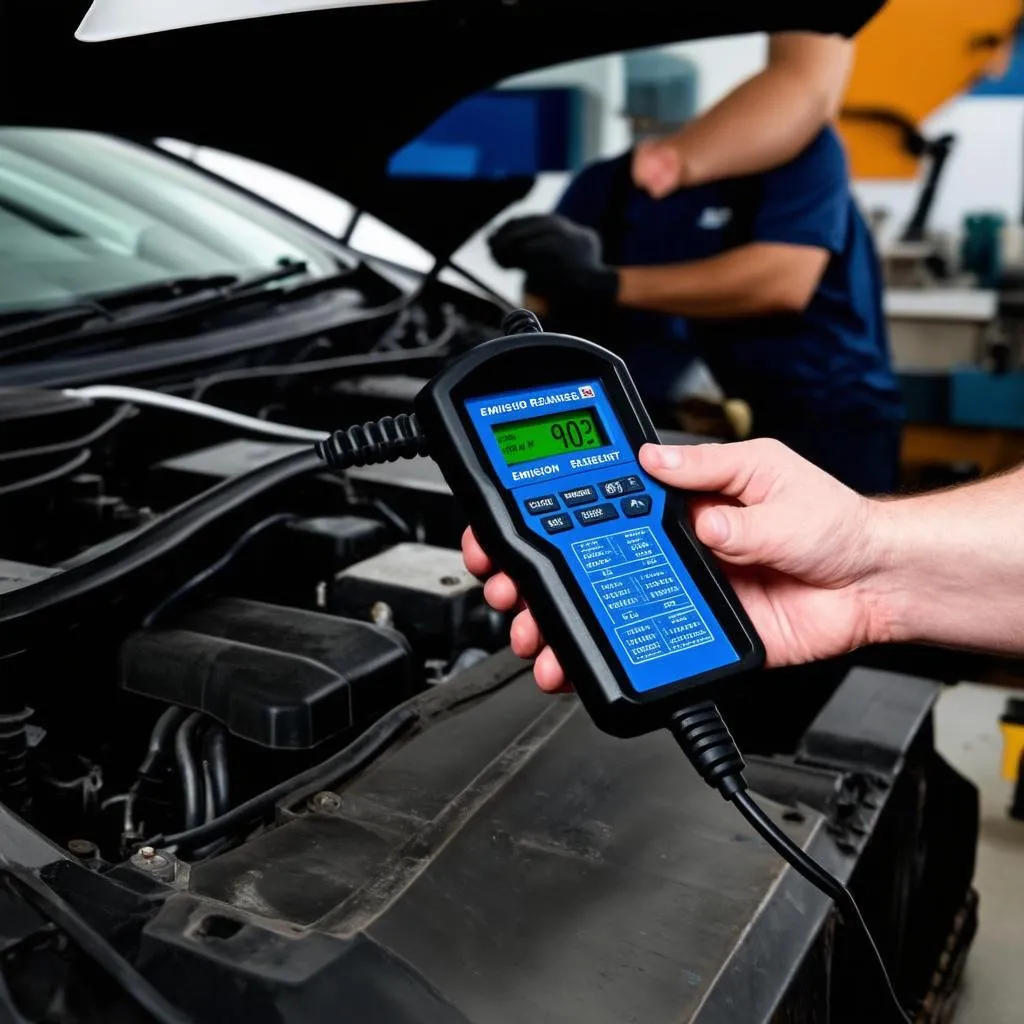Ever felt a shiver run down your spine when your check engine light flickered on, especially right before your California smog test? You’re not alone. Many car owners experience a sense of dread, fearing the potential cost and inconvenience of failing the emissions test. The truth is, a large part of passing that smog test comes down to those little digital guardians in your car’s computer system: OBD monitors.
Let’s demystify these monitors and understand their role in the California smog test.
Understanding OBD Monitors and Their Role in Smog Checks
Imagine your car’s computer system as a vigilant mechanic, constantly monitoring its vital organs (the engine and emissions system) for any signs of trouble. OBD monitors are the specific tests this digital mechanic runs to ensure your car is running cleanly and efficiently.
These monitors are your first line of defense against polluting the California air. Think of them as the environmental gatekeepers, ensuring your car meets the strict emissions standards of the Golden State.
What Exactly Do OBD Monitors Track?
OBD monitors keep a watchful eye on various aspects of your car’s emission control system. Some key areas they focus on include:
- Catalytic Converter Efficiency: This monitor makes sure your catalytic converter is effectively scrubbing harmful pollutants from your exhaust gases.
- Oxygen Sensor Function: Oxygen sensors act like your car’s lungs, measuring the oxygen levels in the exhaust to optimize fuel combustion and minimize harmful emissions.
- Evaporative Emissions Control: This monitor checks for leaks in your car’s fuel system, preventing harmful fuel vapors from escaping into the atmosphere.
- Exhaust Gas Recirculation (EGR) System: The EGR system helps reduce harmful nitrogen oxide emissions, and this monitor ensures it’s functioning correctly.
Why Are OBD Monitors Important for My California Smog Test?
Here’s the crux of the matter: If even one of these OBD monitors isn’t working correctly or hasn’t completed its test cycle, your car will fail the smog test.
Think of it like this: You wouldn’t want a doctor to give you a clean bill of health without checking your heart rate or blood pressure, right? Similarly, the California smog check relies on these OBD monitors to ensure your car’s emissions control system is in tip-top shape.
Common Questions About California Smog Test Obd Monitors
What Happens if My OBD Monitor Isn’t Ready?
This is a common concern, and it can happen for several reasons, such as recently disconnecting your car’s battery or if your car is relatively new and hasn’t run through a full drive cycle.
Don’t panic! You’ll need to drive your car for a certain period under specific conditions to allow the monitors to run their tests. You can find specific drive cycle information online or consult your owner’s manual.
Can I Reset My OBD Monitors to Pass the Smog Test?
While it’s technically possible to reset your car’s computer, this is highly discouraged and can even be illegal. Resetting the system without addressing the underlying issue is like covering up a symptom without treating the actual illness. It’s crucial to get to the root of the problem to ensure your car is running cleanly.
How Can I Check if My OBD Monitors Are Ready?
Many OBD-II scanners available at auto parts stores can read your car’s OBD system and tell you which monitors are ready and which ones still need to complete their cycles.
What are some other common reasons for failing the California smog test?
Several factors can contribute to a failed smog test, including a malfunctioning catalytic converter, faulty oxygen sensors, or issues with the EGR system. It’s best to consult a qualified mechanic for diagnosis and repair.
Tips for Keeping Your Car in Tip-Top Shape for the Smog Test
- Regular Maintenance is Key: Just like regular doctor visits help maintain your health, routine maintenance, including oil changes, spark plug replacements, and air filter checks, will keep your car’s engine running smoothly and minimize emissions.
- Use High-Quality Fuel and Oil: Using high-quality fuel and oil not only improves your car’s performance but also reduces the strain on your emissions system.
- Address Warning Lights Promptly: Ignore that check engine light at your peril! Addressing warning lights as soon as they appear can prevent minor issues from becoming major (and expensive) problems.
 OBD Scanner plugged into car
OBD Scanner plugged into car
Beyond the Technical: A Holistic View of Car Care
While understanding the technical aspects of your car is crucial, there’s a certain satisfaction that comes from connecting with your vehicle on a deeper level. Think of it as a partnership. You depend on your car for transportation, and in return, it needs your care and attention to perform at its best.
Some car owners find that regular cleaning and detailing not only enhance their car’s appearance but also help them stay attuned to its overall condition. It’s like giving your car a little TLC, and in turn, it rewards you with a smoother, more enjoyable ride.
 Car driving on a scenic California highway
Car driving on a scenic California highway
Need Help? We’re Here for You!
Navigating the world of OBD monitors and California smog tests can be daunting, but remember, you don’t have to go it alone. If you need assistance with understanding your car’s diagnostic system or require expert advice on passing your smog test, our team at TechCarUSA is here to help.
Contact us on WhatsApp at +84767531508 for expert assistance with your car diagnostic needs. We offer 24/7 support and can help you find the right solutions to keep your car running smoothly and cleanly.
Happy Driving!
P.S. Want to learn more about California’s OBD-II Readiness Codes? Check out this informative article: http://techcarusa.com/california-obd-2-readiness-codes/